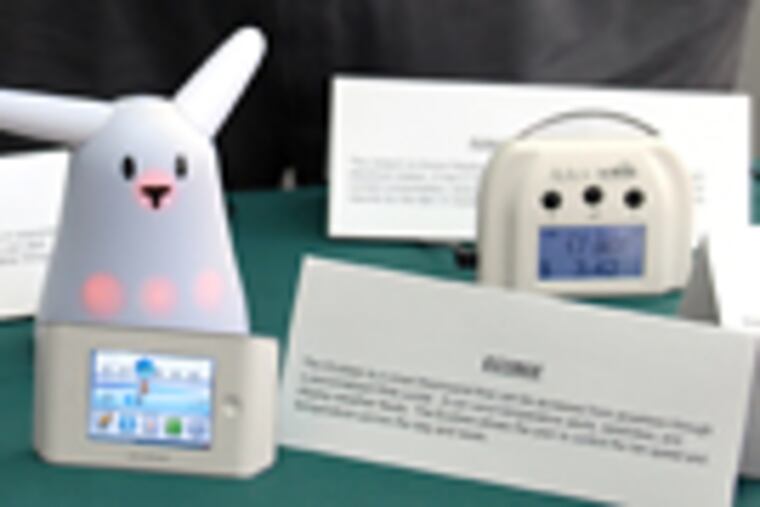Peco, PSE&G debut 'smart-meter' plans
Peco Energy Co. yesterday offered its vision of the electrical grid of the future: In a few years, "smart" electric meters will be able to do much more than measure the power consumed in customers' homes. They will tell customers how much money they are spending on electricity in real time, and offer options for cutting costs.

Peco Energy Co. yesterday offered its vision of the electrical grid of the future:
In a few years, "smart" electric meters will be able to do much more than measure the power consumed in customers' homes. They will tell customers how much money they are spending on electricity in real time, and offer options for cutting costs.
"Your air conditioner will be able to talk to your dishwasher and sequence their usage to save money," Glenn Pritchard, a Peco engineer, said as he surveyed a table of meters and thermostats at the utility's Center City headquarters.
At his Souderton home, Pritchard is testing a wireless model that supplies a weather report on its digital readout. His children's favorite is a 9-inch-high, Web-enabled plastic rabbit that can be programmed to flash red and wiggle its ears when the price of power is getting dear.
If all goes as planned, Peco will connect 600,000 customers to smart meters in three years.
The utility announced plans to spend $650 million in the next 10 years to upgrade its transmission and distribution system to incorporate "smart-grid" technology. The improvements include fiber-optic and wireless-communications systems to enable the smart meters.
To accelerate the rollout, the company applied for $200 million in federal stimulus money from the U.S. Department of Energy, which is administering the $3.3 billion Smart Grid Investment Grant Program.
"This isn't your father's old utility anymore, and I can say that as my father worked here for 35 years before me," said Peco president Denis O'Brien.
The investment will generate customer savings of $500 million over 10 years and $1.5 billion over the expected 25-year life of the equipment, O'Brien said, as well as create employment equal to 4,300 "job-years."
Peco will have competition for the stimulus money, though. Yesterday was the deadline for smart-grid applications, and other utilities also announced proposals.
Public Service Electric & Gas Co. in New Jersey applied for a $76 million grant to fund half of a $152 million project to improve the grid's reliability and protect it against cyberattacks.
PSE&G's plans also include communications technology that would allow for the eventual integration of plug-in electric vehicles, small-scale wind and solar generation, and smart meters.
PPL Electric Utilities Corp., of Allentown, has proposed a $38 million pilot project - half of it funded by stimulus money - that would introduce 60,000 Harrisburg customers to smart technology.
Most of the smart-grid improvements would be invisible to customers, incorporating advanced switches and digital equipment that would increase the system's reliability, efficiency, and security from attack.
The power companies are responding to increasing pressure to meet emerging emission-reduction goals. A new Pennsylvania law requires utilities to reduce electrical-output production 3 percent by 2013 and cut peak-demand load 4.5 percent. It also provides for utilities to recoup their expenses through higher rates.
Next week, Pennsylvania's utilities must disclose their smart-meter deployment plans, which will set the stage for discounting power during off-peak hours to encourage customers to shift consumption away from times when the electrical system's generation and distribution systems are stressed.
Peco is still examining equipment options and pricing plans. Customers will be able to opt to keep the current flat-rate pricing scheme.
Part of Peco's grant proposal is to incorporate a pilot project for clients of the Philadelphia Housing Authority that would become a model for low-income customers. Liberty Property Trusts and Drexel University have also signed on to integrate properties into the Peco network more efficiently.
Residential customers may have an array of smart-meter options. They might range from simple devices that provide a color-coded light signal to curtail power during peak hours to sophisticated ones that tie in major appliances so that customers could volunteer to allow Peco to remotely manage their use during peak hours.
Or customers might be able to manage their home thermostats through the Internet, or even a wireless handheld device such as a BlackBerry.
"When we all see the meter running . . . we will all be able to manage our energy much more effectively and efficiently," O'Brien said.